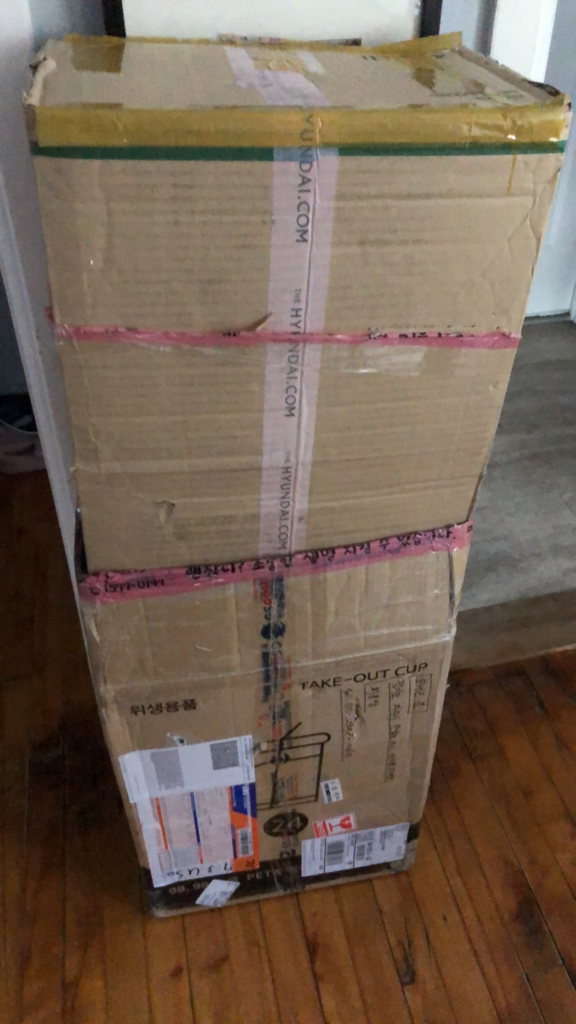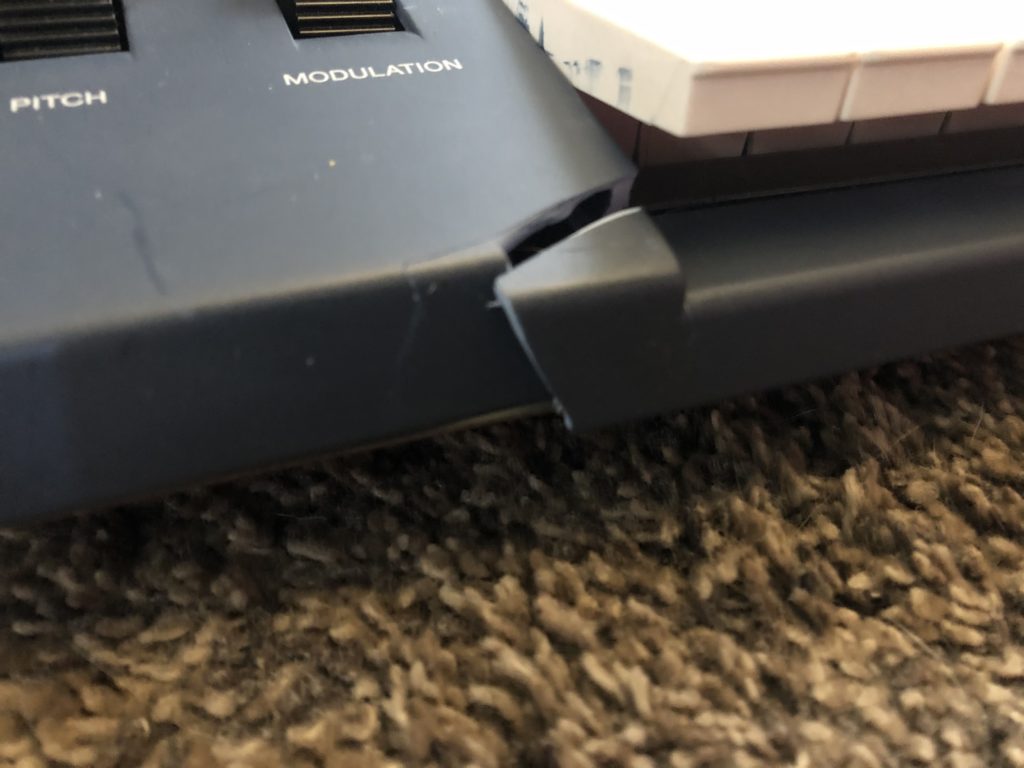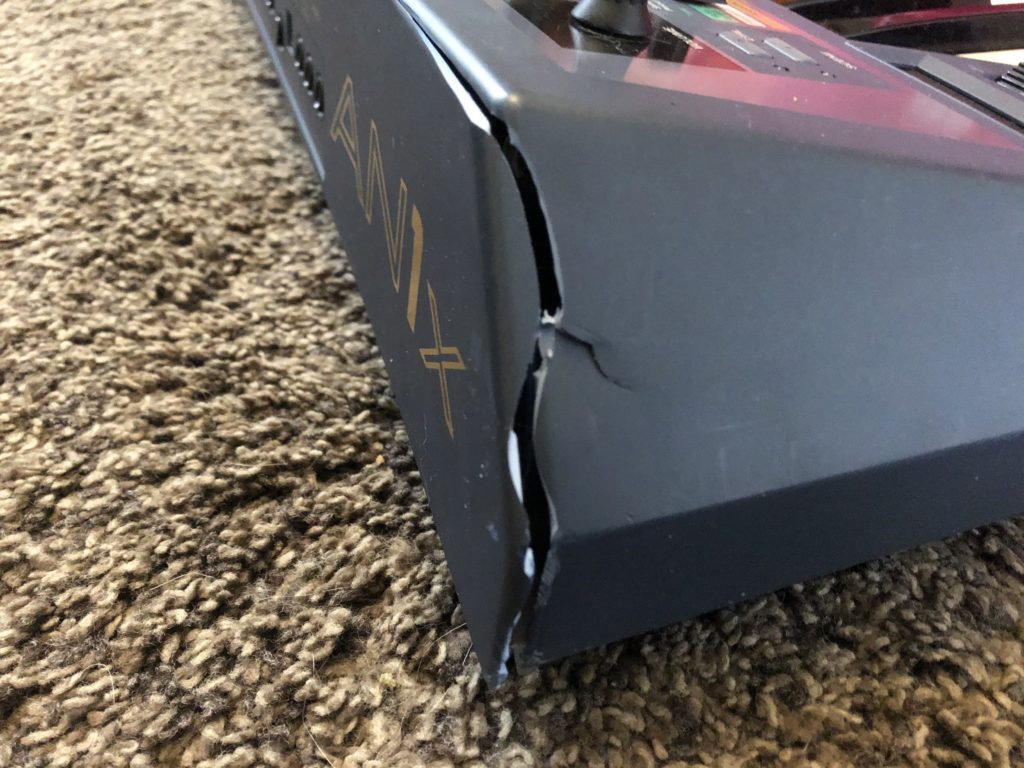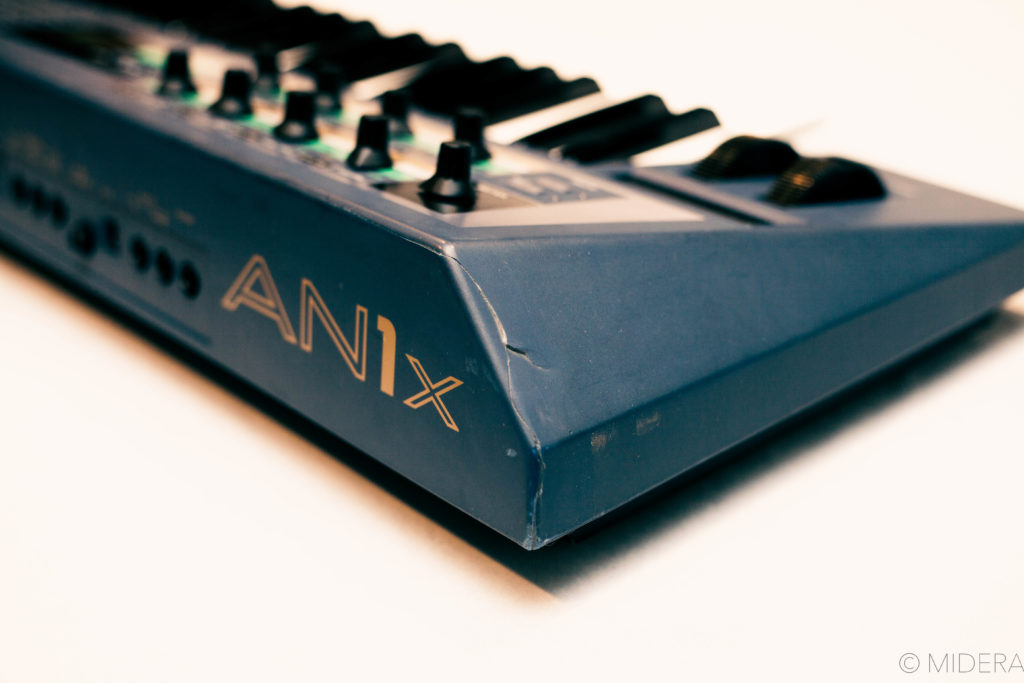Still one of the best Virtual Analog synthesizers

My personal history with the AN1x
I bought my first Yamaha AN1x back in October 2019. I bought it through Guitar Center’s used gear for somewhere around $450. It had a bad battery error and I managed to haggle with the folks at Guitar Center to get free shipping. So, that was a win. I actually bought it for a friend, who wanted it, but I figured this would give me a chance to try it out and if I didn’t like it, sell it to him. Well, the problem with that was that I felt a bit obligated to sell it to him. Although I really liked it and felt it had some sort of magic, I found many reasons to not keep it and sold it to him. He later offered it back, but I declined. Then he sold it to someone else, and only then did I decide I wanted it back. I had decided that I would finish a set of patches. So I bought it back. When I got it back, some of that magic faded. So, it sat on its side for months. At that point, I managed to trade it (and cash) for a Moog Matriarch, which was a great deal at the time. Seven months passed and on a vacation with my family I was listening to stuff I made using the AN1x and thought, “you know, I’d like to try to finish that patch bank…” and decided to buy another one. This time, I spent $800 (which, after I bought it, I thought “that was way too much”) and bought it from someone internationally. This, of course, was a mistake. You see, the seller clearly was not well-versed in shipping synthesizers. They shipped it by taking two cardboard boxes and combining them to make one bigger box. Somewhere in shipping, the box got smashed. It had no structural integrity at all because it was two boxes. The AN1x took a ton of damage. We eventually worked out a deal, in which I would keep it for the shipping costs that they had to incur ($200). You’ll see in the photos that I actually fixed it up pretty nice. It just has some scars. Basically, I mixed up some JB Weld and gobbed it on the inside and clamped the AN1x together and waited 24 hours. Honestly, it doesn’t look that bad, and for $200 it was a good deal.





The User Interface
I imagine the first thing anyone thinks when they see the Yamaha AN1x is, “Wow, that must have a terrible user interface.” In fact, I’m certain I thought the same thing. It does look like it has an awful interface. Of course, it isn’t a one knob per function (OKPF) or WYSIWYG, so it obviously takes some effort to get your way around it. So let’s just break it down to the basics.
There are two main editing parts to the AN1x. On the left side, there are 8 encoders for editing most aspects of your sounds. There are 8 color coded buttons next to the LCD screen which change what the 8 encoders edit (which have color-coded blocks with words that describe what they edit when rotated). It’s fairly simple to get around this part. The ride side is probably a little more complicated. There is a single encoder and a matrix of words, which is for editing less important aspects of your patches, global settings, and arpeggiator/sequencer. If you want to edit the polyphony or LFO reset, you turn the encoder counterclockwise to the top line of the matrix and then press up or down on the buttons underneath all the text. The most important thing for simplifying this section is this: set up an ‘assign’ knob on the left side of the synth (which is activated when you press ‘assign’ in the lower right hand side of the color coded buttons) to modify ‘data entry’ within the “Ctrl Device” section on the synth. I use assign encoder 8 for this. Basically, it provides you with a knob to adjust the righthand side settings, instead of pressing up and down repeatedly. This really improves the accessibility of this section. Please set this up if you haven’t yet.
Sounds like Boards of Canada
There’s probably nothing you’ll read here that will surprise you regarding the sound of the AN1x. The internet has already provided its share of commentaries on the AN1x (although, maybe by the same 3 people). The Yamaha AN1x appears to have a bit of a cult following. I don’t know many people who own one or who have owned one and didn’t like how it sounds. Of course, it’s difficult to describe ‘sound’ because, as usual, it’s subjective. From my perspective, it reminds me a lot of a more modern Roland JX-3P. There’s some sort of ‘sparkle’ in the sound that I can’t quite put my finger on. Both the JX-3P and AN1x have this sparkle. I think it has to do with high-frequencies that come through. I’ve noticed when looking at the frequency range in my EQ plug-in that the AN1x will show frequencies about 20 kHz, which we can’t really hear, but I wonder if this still contributes to the overall sound. The Access Virus TI, on the other hand, has some sort of low pass filter that cuts off frequencies above 20 kHz. Maybe this is why the Virus sounds ‘darker’ to people?
I think the easiest way to describe the AN1x is to say, “It sounds like Boards of Canada.” Yes, I think that’s pretty adequate.
The filters themselves sound really good. I would list these as among the best digital filters I’ve ever heard. The resonance blends very well into the sound and doesn’t ‘whistle’ like other digital filters that I’ve heard. They’re certainly a notch or two above the Korg Radias filters. You can choose between 24, 18, and 12 dB low pass filters, a 12 dB band pass filter, a 12 dB high pass filter, and a ‘band elimination filter’ which I believe is just a notch filter (although I didn’t use this much myself).
Interesting features of the AN1x include: 1) “Edge” parameter for shaping your waves from sine to square. Effectively, this feature adjusts the ‘sharpness’ of the waveforms. 2) You can modulate the width of all waveforms (PWM), including saw, which can easily add an interesting timbre to the sound. 3) Feedback. This sends the entire sound signal after the VCA back to the mixer section (immediately after the oscillators). I think the feedback setting is one of the first things to tweak, as it can mellow out the resonance or thicken the sound in ways you might not expect.
I think the FM section also sounds very good, although it’s really not a complex feature of the AN1x. Surprisingly though, it manages to create excellent FM-like tones. I’m really pleased with this aspect of the AN1x. For instance, I also own the Roland System 8 which has a lot of FM stuff going on. However, there is a bug in the System 8 that causes clicking when voices are stolen. This becomes extremely annoying and apparent when you’re using a nice soft bell sound and clicking occurs when you are playing new notes that cut off previous ones. I rarely use the System 8 for FM sound design. The AN1x is far simpler, but gets me somewhat close to my SY77 for FM tones.
One thing I really started to get a handle on and utilize towards the end of developing a bank of patches: Scenes. Scenes are basically individual timbres, or sounds. You can morph between two sounds with the mod wheel when they’re both activated. I only recently realized how easy it was to create a sound, copy it to the other scene (you hold ‘store’ and then press the other scene and it asks if you want to store your scene there), and then put the ‘separate’ parameter up to 32. Then you have this very wide sounding patch. Of course, you are left with only 5 voices, but in my opinion, this feature seems very similar to the UDO Super 6. I’m not exactly familiar with ‘binaural’ in that synth, but if you listen to my bank of patches, check out patch 055 (WarmingSun) for how the 10 voices, spread with 5 voices on the left and 5 voices on the right channels sound. Basically, the AN1x is missing 1 voice compared to the UDO. You might argue that the UDO is a far better built synthesizer and looks way better than the AN1x and I wouldn’t disagree with that. I would only argue that, if you own the AN1x and are lusting after the UDO for the binaural feature, you may want to reconsider and figure out how to use scenes. I don’t think you’ll regret it. And to get around the voice stealing, throw on some delays and you’ll hardly notice the voices stealing.
The FX section really adds to the sound. I don’t personally think the FX are quite as nice as those on the Virus TI, but I think they’re above adequate, and surprisingly good considering there are some current synthesizers that don’t have as good of FX (like the Roland System 8). The onboard chorus sounds very close to the Roland chorus to me, and I think it gets closer than the Virus TI, even though that is marketed as replicating the Roland chorus with its vintage mode (which just always sounds a bit two dimensional or flat to me). For the most part, I used chorus for bell-like sounds which really contributed to making ‘full’ sounding electric piano patches. For pads, I liked to use the Auto pan FX. The reason I used this instead of the random panning feature (which I do like) is because that random panning per note created audible clicks and glitches occasionally which really bothered me. I know it wasn’t just my unit because it has happened on both units I own. I dislike the delays not being longer or syncing to tempo (although, the LFOs also do not sync, which is definitely a ‘con’ with the AN1x).

Value in the current market
Like the Ensoniq ESQ-1, the AN1x seems to be in this interesting bubble where they are really well liked due to their sound, but are somewhat undervalued on the secondhand market. It’s probably due to the appearances, is my guess. We humans are fickle (at least I am) and some synthesizers likely hold higher values because of aesthetics. Although, I guess if I was willing to spend $800 USD on the AN1x in 2021, perhaps it’s appreciating in value, even slowly.
Dislikes
Ok, so what is it that I don’t like about the Yamaha AN1x? Well, there’s one intangible thing that I don’t think others will suffer from, which is: I have no idea how to incorporate it into my studio. It has not made it onto one song of mine. Not one. The reason for this is likely that I have just way too many other synthesizers. Worse, I have way too many digital or virtual analog synthesizers. I would never replace my Access Virus TI with the AN1x, even if there are times I prefer the AN1x. The Virus is just all around easier to edit and sounds excellent, and it’s been with me for years. It’s probably my favorite synthesizer that I own. The AN1x just won’t ever be able to compete with that, and so it’s never really made it into my setup (although I have multiple setups with different ‘islands’ of sequencers). I will try to give it more of a chance, because my biggest goal was to create a patch bank, and I finally accomplished that.
One glaring issue is the lack of resolution of the encoders. Truly, it is abysmal how ‘steppy’ they are, especially the cutoff knob. I would have hoped that there was a workaround to getting a smoother transition of the cutoff, but all the suggestions never seemed to pan out for me, like assigning the mod wheel to the filter sustain and leaving sustain at maximum. Assigning the filter cutoff to the mod wheel also does nothing to improve resolution, so don’t bother. If you chose to avoid filter cutoff sweeps, then you will be just fine with this.
The keybed just feels like cheap junk to me. Not even semi-weighted keys. These are non-weighted keys. They’re extremely light and while some may prefer that, I do not. I want to feel nice, smooth, buttery keys (again, my favorite keybed is that of the Access Virus KB, which I hope to own again some day). This keybed goes down in history as among the worst keybeds I’ve ever used. I know some people like it, and I can appreciate and respect that. It’s just not for me personally.
The overall build quality is terrible. I can’t stand plastic synthesizers. This goes for the Roland System 8, JP8000, and heck, even the Roland SH-101 (although, for its small package size, I think it makes more sense). If you ever look up used Yamaha AN1x’s online used shopping stores, you’ll find they’re more beat-up than not. They almost always have damaged plastic or completely worn off printing. The AN1x seems worse than most.
Lack of tempo syncing and mod sources/destinations. You can’t tempo sync anything. That’s a bit of a shame. I would like to be able to do that, especially if I were to incorporate it into my setup. The lack of modulation sources and destinations confused me at first. A lot of parameters are hard-wired to LFO 1 (and some to LFO 2). Although you can sometimes change the destinations, you will likely notice a lack of options. There is a free EG that can somewhat be used to deal with both tempo syncing and pseudo-LFO options, but it’s not exactly my go-to when doing sound design.
The LCD itself is probably a ticking time bomb. The light will likely go out, if it hasn’t already (or at least be very dim). There appears to be a fix to this, adding LEDs to the inside housing of the AN1x, but reading up how to do it just made me feel exhausted. I don’t have the time, patience, or skill to do it, and I think I’d need all three.
Final Thoughts (“It’s not you, it’s me“)
Am I going to keep the Yamaha AN1x? Am I going to use it in my setup? I honestly don’t know yet. I just finished my 64 bank of patches and I think I need a break from sound design. I didn’t realize how exhausting and tedious it was. To make up new sounds, to name them, to film myself playing them, coming up with melodies for each… that was a lot for me (and who knows if anyone will hold any interest anyway). Despite the tedium, I will admit that it wasn’t hard to come up with sounds I liked, so the AN1x has that going for it. The fact that it sounds amazing (and that I got mine for $200 and I know they’ll just keep climbing), is probably reason enough to hang on to it, for now at least. I wish I had a more positive final thought on it. The unfortunate reality is, I have just way too many synthesizers and the AN1x is probably among the lowest on the totem pole, because I just enjoy my other synthesizers a little more. So if I do part with the AN1x, I’ll have to say to it, “I’m sorry. It’s not you, it’s me.”
Great article! I’m from Brazil and it was really hard to find one down here. I finally did it, and for a good price! I intend to keep hold of it 😉